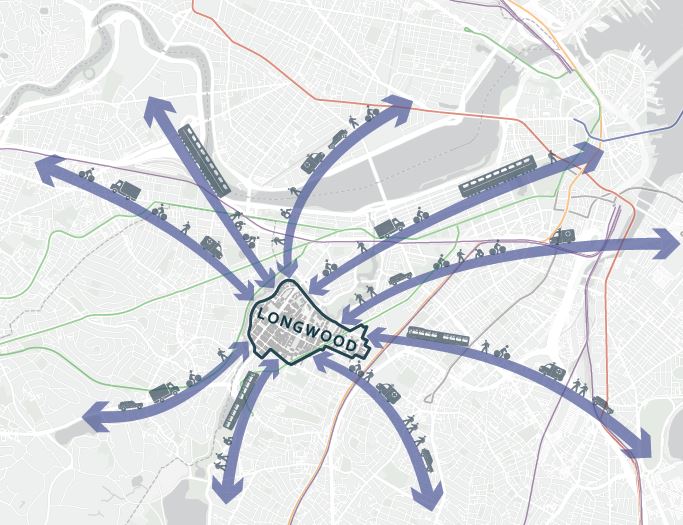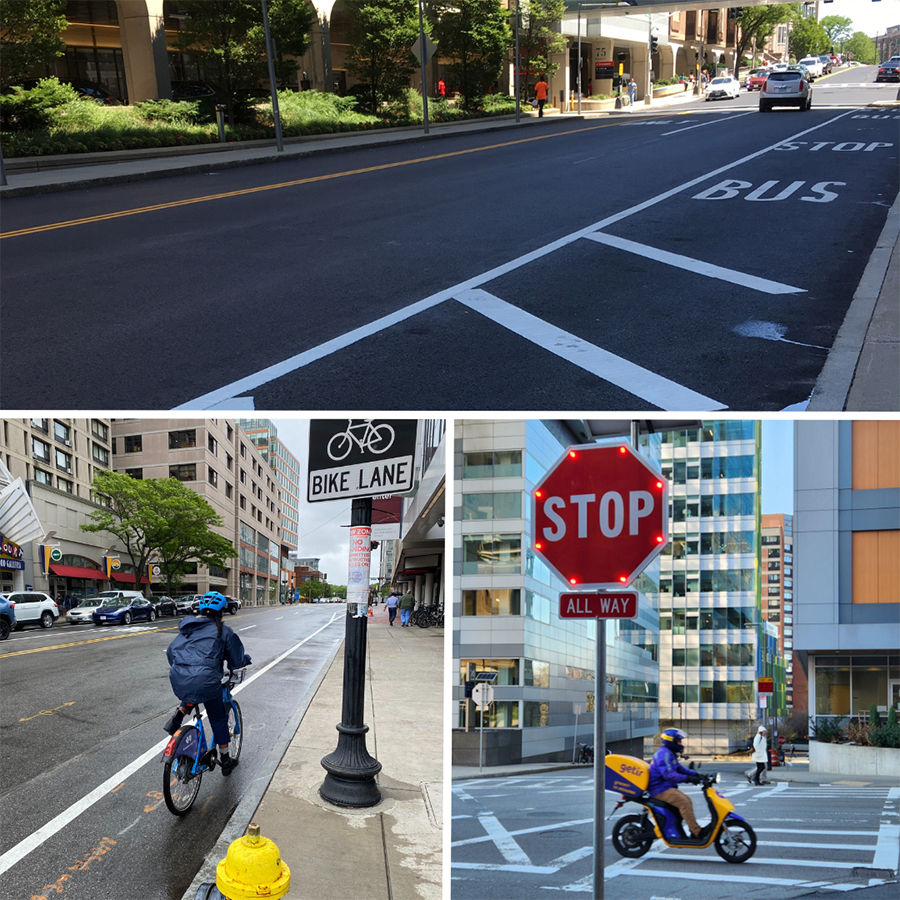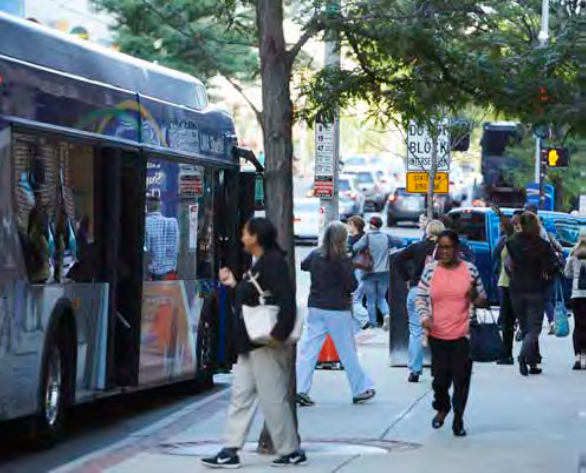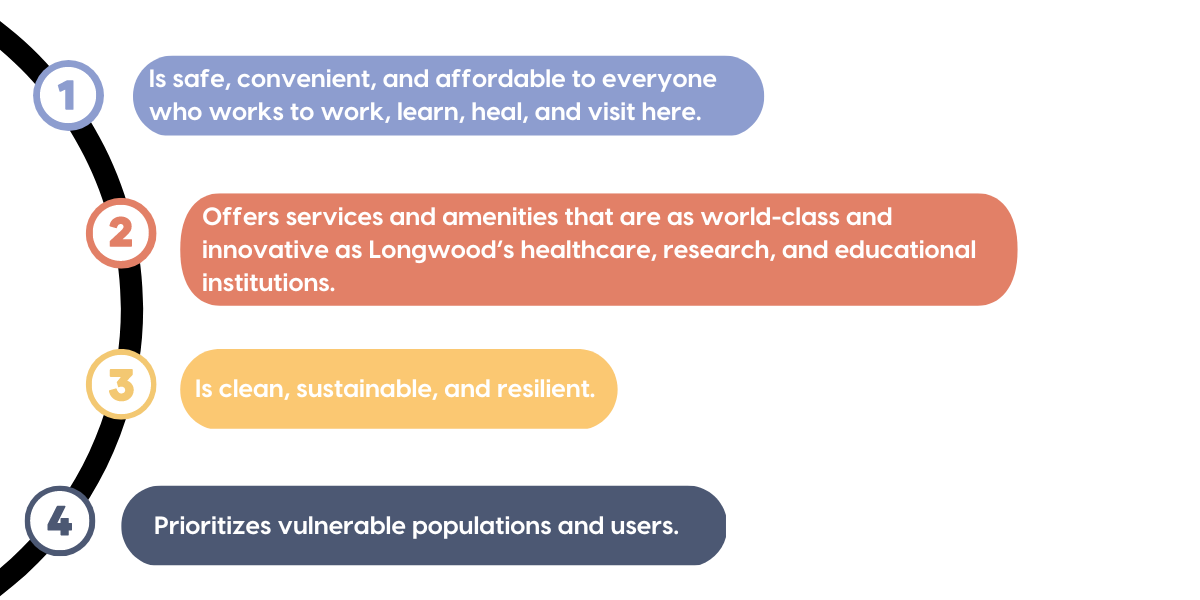
Continuous improvements to the transportation network are essential to keep the Longwood Medical and Academic Area (LMA) safe and accessible for people of all ages and abilities. Longwood Collective’s Area Planning and Development Department (APD) completes studies and makes physical improvements for the benefit of people on foot, cyclists, subway, bus and commuter rail riders and those who drive and carpool to the area.
The Longwood Collective’s vision of “making Longwood the most desirable place to work, learn and heal” has been significantly aided by partners at the City of Boston, Massachusetts Bay Transportation Authority (MBTA), Massachusetts Department of Transportation (MassDOT) and Department of Conservation and Recreation (DCR), who have collectively advanced initiatives that help to make Longwood and its surrounding neighborhoods quality places to live, work and play.
Our Multi-Modal Transportation Work In Longwood:
Transportation Implementation
District-Wide Transportation Planning
-
Fund and lead transportation planning projects, studies, and infrastructure needs assessments
-
Fund, plan and implement transportation improvements such as bike lanes, crosswalks, signage, and safety improvements
-
Collaborate with City, State, private property owners, institutions and the local community on larger initiatives such as the Bus Network Design, roadway reconstruction and signals upgrades

Transportation Operations
-
Operate a fleet of 37 buses that provide 2.7 million rides annually (1.7 million post COVID and rising)
-
Oversee Longwood’s Transportation Management Association (TMA)
-
Manage over 2,000 parking spaces for Longwood employees

Transportation Projects Evaluation and Analysis
All of the transportation work conducted by Longwood Collective is guided and grounded by the principles, goals, and metrics that align with LMA transportation priorities established through our Transportation Framework. The Framework is a comprehensive collection of the overall transportation conditions of the area and an overarching tool to evaluate transportation projects affecting Longwood based on a system of governing principles, goals, and actions.
Our Guiding Transportation Principles
Transportation to and through the LMA:

Table 1: A verifiable system to evaluate and prioritize projects based on Longwood’s Principles and Goals.
| GOAL | ACTION ITEM | METRIC |
|---|---|---|
|
1) Manage Congestion |
a) Prioritize access for emergency vehicles and patients in private vehicles. b) Manage non-essential single occupancy vehicle (SOV) traffic. |
|
|
2) Improve Transit |
a) Expand transit service both within and outside traditional commute peaks. b) Preserve and enhance reliable transportation. c) Expand affordable and flexible commute options. |
|
|
3) Improve Multimodal Safety and Infrastructure |
a) Reduce conflicts between modes to support City's Vision Zero Policy. b) Enhance walking, biking, and micro-mobility infrastructure. c) Expand access to space-efficient, cost effective modes of transportation. |
|
|
4) Manage the Curb |
a) Proactively manage limited street/curb space to support more efficient employee and patient access. b) Remove conflicts of goods/materials loading and delivery. |
|
|
5) Plan for Emerging Mobility Services and Technologies |
a) Monitor and proactively plan for new mobility trends and services. b) Explore opportunities to promote pilot programs. |
|
Outlining Existing Conditions
The Transportation Framework includes a number of maps depicting the LMA’s current transportation conditions, including:
-
Longwood’s mode share trends and transit capacity
-
Regional walk connections and barriers, and walk volumes
-
Sidewalk conditions
-
Bicycle volumes, regional connectivity
-
Bus frequency by time of day
To learn more, please view our full Transportation Framework.